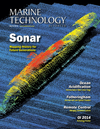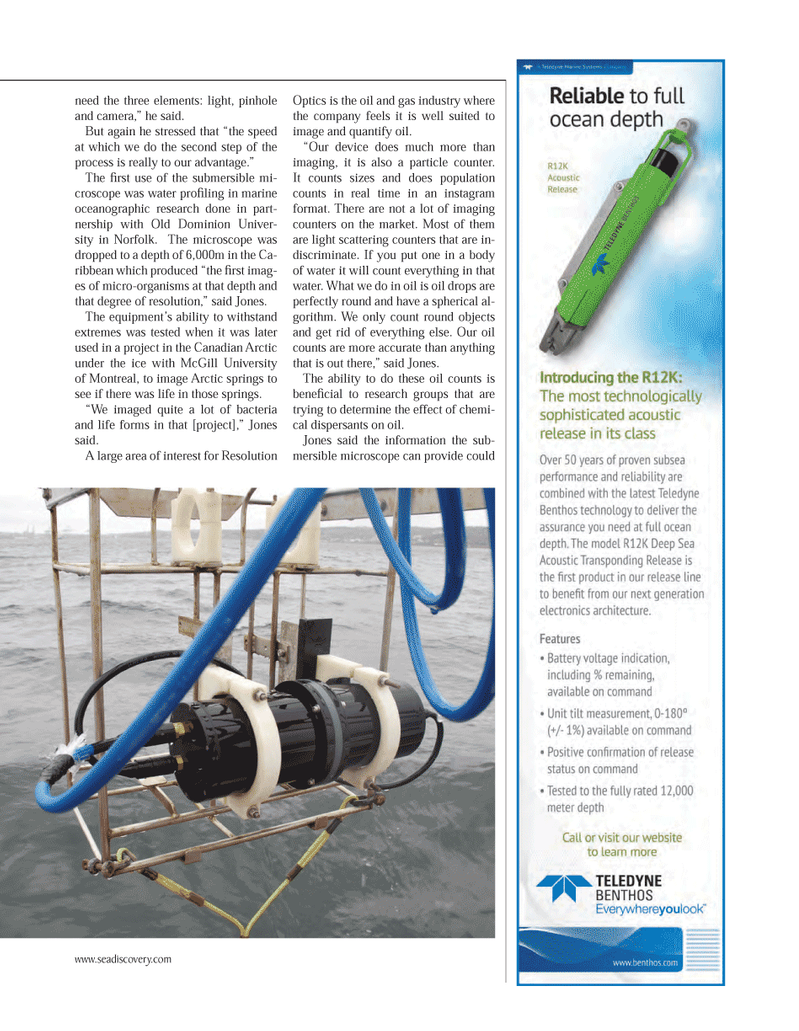
Page 69: of Marine Technology Magazine (March 2014)
Instrumentation: Measurement, Process & Analysis
Read this page in Pdf, Flash or Html5 edition of March 2014 Marine Technology Magazine
www.seadiscovery.com need the three elements: light, pinhole and camera,? he said. But again he stressed that ?the speed at which we do the second step of the process is really to our advantage.? The rst use of the submersible mi- croscope was water pro ling in marine oceanographic research done in part-nership with Old Dominion Univer- sity in Norfolk. The microscope was dropped to a depth of 6,000m in the Ca-ribbean which produced ?the rst imag- es of micro-organisms at that depth and that degree of resolution,? said Jones. The equipment?s ability to withstand extremes was tested when it was later used in a project in the Canadian Arctic under the ice with McGill University of Montreal, to image Arctic springs to see if there was life in those springs. ?We imaged quite a lot of bacteria and life forms in that [project],? Jones said.A large area of interest for Resolution Optics is the oil and gas industry where the company feels it is well suited to image and quantify oil.?Our device does much more than imaging, it is also a particle counter. It counts sizes and does population counts in real time in an instagram format. There are not a lot of imaging counters on the market. Most of them are light scattering counters that are in-discriminate. If you put one in a body of water it will count everything in that water. What we do in oil is oil drops are perfectly round and have a spherical al- gorithm. We only count round objects and get rid of everything else. Our oil counts are more accurate than anything that is out there,? said Jones. The ability to do these oil counts is bene cial to research groups that are trying to determine the effect of chemi- cal dispersants on oil.Jones said the information the sub-mersible microscope can provide could MTR #2 (66-81).indd 69MTR #2 (66-81).indd 692/22/2014 1:57:51 PM2/22/2014 1:57:51 PM

 68
68

 70
70
